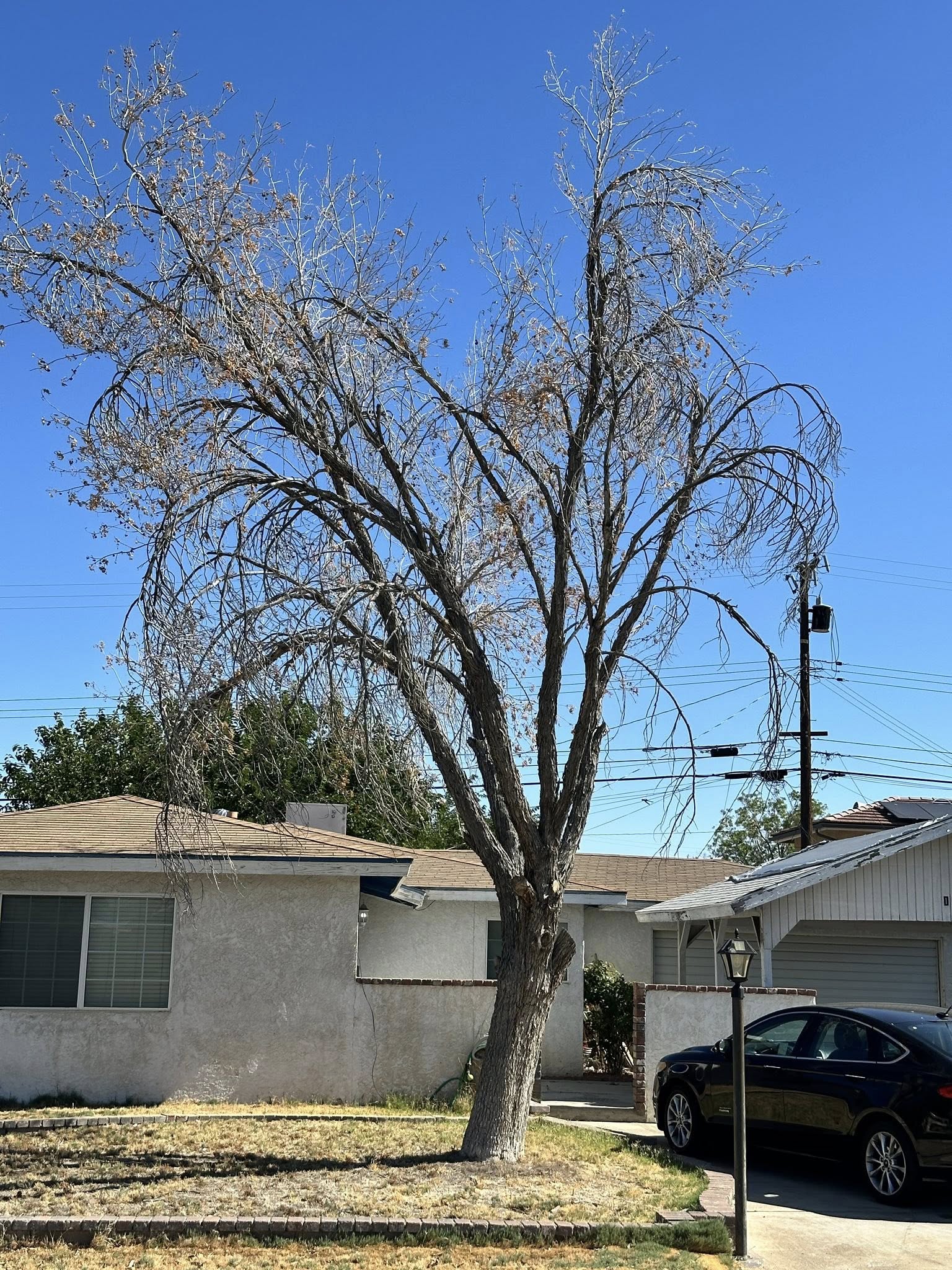
Dead Tree Removal-The Hidden Danger in Your Front Yard: Why That Dead Tree Can’t Wait
When you look out your front window, what do you see? A strong shade tree? A patch of dry grass? Maybe a dying or already-dead tree that’s been sitting there longer than it should?
If you’re nodding your head, this article is for you.
At Tip Top Arborists, we’ve been in the tree care business long enough to know that a dead tree in the front yard is more than just an eyesore. It’s a liability — one that could cost you far more than you think.
Let’s break down what’s really going on with that tree and why putting off its removal could be one of the most expensive decisions you make this year.
What Happens When a Tree Dies?
It doesn’t always look dramatic at first. A few dry branches, some patchy leaf growth. Maybe it’s been dropping bark or you’ve noticed more birds pecking away at soft spots. But over time, a dead tree loses its structural integrity — from the roots to the crown.
Here’s what that means:
- Roots decay, and the tree becomes unstable in high winds or heavy rain.
- Branches dry out and snap, often without warning.
- Trunks become hollow, creating a domino effect of weakness.
- Pests move in, from termites to carpenter ants to powderpost beetles.
- Fungus spreads, often affecting nearby plants or even causing health issues in pets or people.
At a glance, it might still look like a “tough old tree.” But under the bark, it’s a ticking time bomb.
The Real Risk: What That Tree Could Cost You
A dead or dying tree on your property might seem like “no big deal” until it’s suddenly a very big deal.
Here’s a breakdown of what could go wrong — and how much it could cost:
1. Property Damage
Dead trees don’t fall politely. They snap in storms, collapse onto cars, fences, roofs, sheds — and when they do, they can cause thousands of dollars in damage. We’ve seen a single branch bring down power lines, crush a new SUV, or knock a hole in a roof.
Average cost of repair? Between $5,000 and $20,000, depending on the damage.
2. Injury or Legal Liability
If that tree falls and injures a visitor, neighbor, delivery driver, or even a passing pedestrian, the situation moves from unfortunate to legally complicated — fast.
Homeowners insurance may cover part of it, but if the tree was known to be dead or neglected, you could be on the hook. Especially if it crosses property lines or hits public infrastructure.
3. Decreased Property Value
Curb appeal matters. A half-dead or decaying tree makes your home look neglected. It can affect real estate appraisals and make buyers nervous — especially if there’s visible damage or the tree threatens the driveway, porch, or windows.
Signs Your Tree Might Be Dead (Or Close)
Not sure if your tree is really dead? Here are signs to look for:
- No leaves during the growing season
- Bark peeling off in large sheets
- Brittle, dry limbs that snap easily
- Hollow-sounding trunk
- Fungal growth at the base
- Visible lean or soil heaving around the roots
- No new growth for two or more seasons
If any of these match what you’re seeing — it’s time to get it checked. At Tip Top, we offer hazard assessments that give you clear answers before things get worse.
Don’t Wait Until Storm Season- Dead Tree Removal
Every year, we get a flood of emergency calls right after the first major storm. A gust of wind, some unexpected rain, and suddenly a tree that “looked fine yesterday” is lying across a roof or blocking a driveway.
By then, it’s too late for prevention.
Emergency removals are often more expensive. Crews may need to work at night, during active weather, or around active power lines. Costs go up. Stress goes up. And it didn’t have to happen.
Removing a dead or dying tree during clear, calm weather is safer, easier, and significantly more affordable.
The Tip Top Promise: Dead Tree Removal
If you’ve got a front yard tree that’s on its last legs, Tip Top Arborists wants to help you out.
Whether it’s completely lifeless or halfway there, we’ll inspect, confirm, and safely remove it before it becomes a liability.
Call our office at 661-942-5501 and ask for Tom. He’ll get you scheduled, walk you through the estimate, and make sure everything is taken care of from permit to cleanup.
What’s Included in Our Service?
We don’t just “cut and go.” Our certified crews handle the job from start to finish, including:
- Site inspection and risk assessment
- Safe tree removal and limb lowering
- Stump grinding (optional but recommended)
- Cleanup of all debris
- Haul-away and recycling of wood waste
We’re licensed, insured, and have been serving the Antelope Valley and surrounding areas for over 40 years. You’re in good hands.
Final Thought: Don’t Gamble with Gravity
A dead tree isn’t just “something to get to later.” It’s a hazard that grows more dangerous every day. And unlike a slow leak or a cracked tile, when this goes bad — it goes really bad.
You wouldn’t ignore a broken brake light on your car. Don’t ignore the dead tree outside your front door.
Let’s handle it now, before it costs you more than it should.
![]()
Tip Top Tree Care: Straightforward, Safe, Reliable
Ready to get that tree out of the way? We’re here to help — no pressure, no guesswork, no surprises.
Call Tip Top Arborists today at 661-942-5501
Or visit www.tiptoparborists.com to schedule your removal or hazard inspection.
Take care of that risk — before it takes care of your roof, fence, or insurance deductible.
